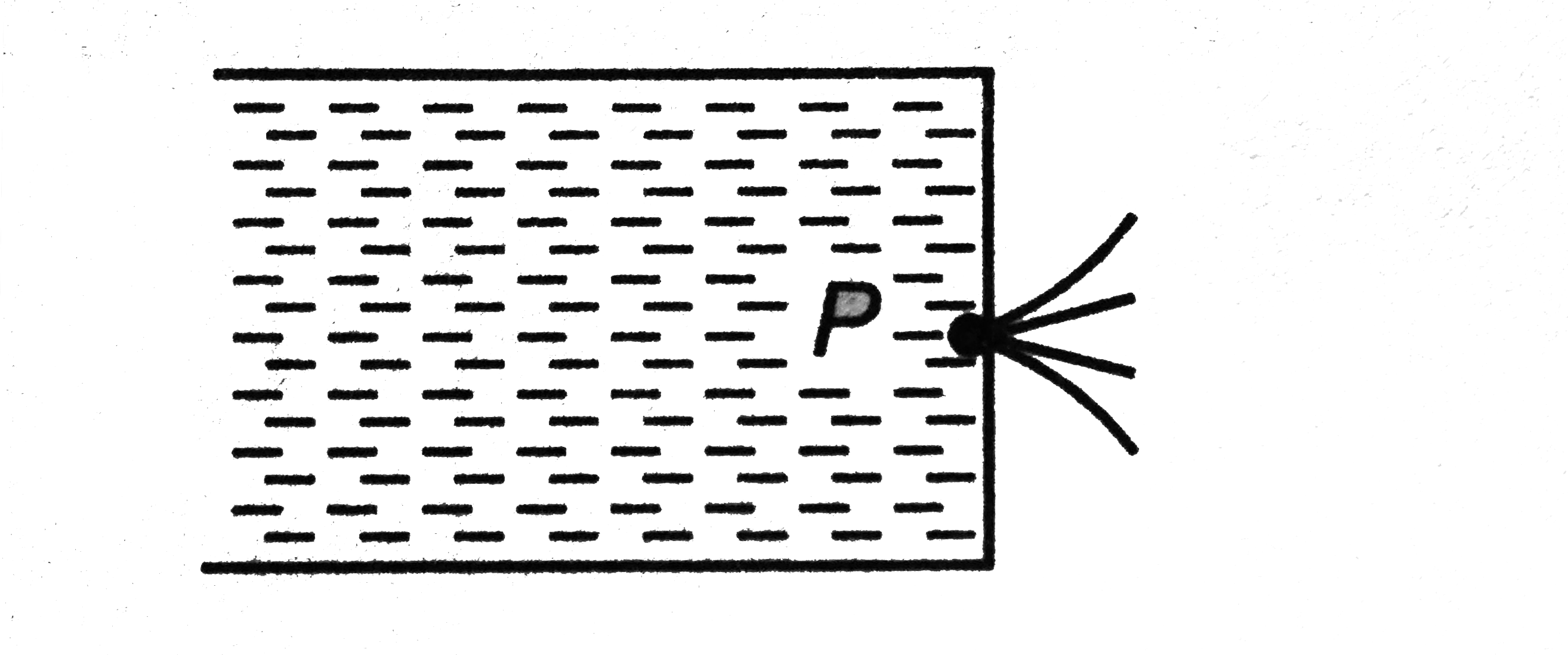Calculate the speed with which wafer emerges from a hole in a tank at which the gauge pressure is 3×105N/m2 ?
To calculate the speed at which water emerges from a hole in a tank given the gauge pressure of 3×105N/m2, we can use Torricelli's theorem, which states that the speed of efflux of a fluid under the influence of gravity can be determined by the equation:
v=√2gh
However, since we have the pressure instead of height, we can relate pressure to height using the formula:
P=ρgh
Where:
- P is the pressure (in N/m²),
- ρ is the density of the fluid (for water, ρ≈1000kg/m3),
- g is the acceleration due to gravity (approximately 10m/s2),
- h is the height of the water column.
Step 1: Rearranging the Pressure Equation
We can rearrange the pressure equation to find h:
h=Pρg
Step 2: Substituting Known Values
Now, we substitute the known values into the equation:
- P=3×105N/m2
- ρ=1000kg/m3
- g=10m/s2
h=3×1051000×10
Step 3: Calculating h
Now we perform the calculation:
h=3×10510000=30m
Step 4: Calculating the Speed of Efflux
Now that we have h, we can substitute it back into the speed equation:
v=√2gh=√2×10×30
Step 5: Performing the Calculation
Calculating the value inside the square root:
v=√600=√6×100=10√6m/s
Final Result
Thus, the speed at which water emerges from the hole is:
v≈10×2.45≈24.5m/s
Summary
The speed with which water emerges from the hole in the tank is approximately 24.5m/s.
---
- P is the pressure (in N/m²),
- ρ is the density of the fluid (for water, ρ≈1000kg/m3),
- g is the acceleration due to gravity (approximately 10m/s2),
- h is the height of the water column.
We can rearrange the pressure equation to find h:
Now, we substitute the known values into the equation:
- ρ=1000kg/m3
- g=10m/s2
Now we perform the calculation:
Now that we have h, we can substitute it back into the speed equation:
Calculating the value inside the square root:
Thus, the speed at which water emerges from the hole is:
The speed with which water emerges from the hole in the tank is approximately 24.5m/s.
Topper's Solved these Questions
- MOTION IN FLUIDS BOOK - ICSECHAPTER - MOTION IN FLUIDS EXERCISE - CONCEPTUAL SHORT ANSWER QUESTIONS WITH ANSWERS
16 Videos
- MOTION IN FLUIDS BOOK - ICSECHAPTER - MOTION IN FLUIDS EXERCISE - LONG ANSWER QUESTIONS
5 Videos
- INTERNAL ENERGY BOOK - ICSECHAPTER - INTERNAL ENERGY EXERCISE - SELECTED PROBLEMS (FROM HEAT ENGINES)
21 Videos
- OSCILLATIONS BOOK - ICSECHAPTER - OSCILLATIONS EXERCISE - SELECTED PROBLEMS (OSCILLATION IN A TUNNEL BORED THROUGH THE EARTH)
2 Videos
Similar Questions
If the water emerge from an orifice in a tank in which the gauge pressure is 4×105Nm−2 before the flow starts, then what will be the velocity of the water emerging out ? Take density of water is 1000kgm−3
View Solution_S01_030_Q01.png)
A cylinderical tank 1 m in radius rests on a plaform 5 m high. Initially the tank is filled with water upto a height of 5m a plug whose area is 10−4cm2 is removed from an orifice on the side of the tank at the bottom.
Calculate (a). Initial speed with which the water flows from the orifice
(b). Initial speed with which the water strikes the ground.
View Solution
Knowledge Check
At What velocity does water emerge from an orifice in a tank in which gauge pressure is 3×105Nm−2 before the flow starts ? (Take the density of water =1000kgm−3.)
A24.5ms−1B14.5ms−1C34.5ms−1D44.5ms−1
Calculate the speed of efflux of kerosene oil from an orifice of a tank in which pressure is 4 atmosphere. Density of kerosene oil = 0.72 kg /lite.
View SolutionCalculate the speed of longitudinal sound wave in a liquid. The bulk modulus for the liquid is 20×109N/m2 and its density is 9.5×103kg/m3.
View SolutionWhat is the absolute pressure on a swimmer 10m below the surface of a lake? Take atmospheric pressure 1×105N/m2
View Solution4m3 of water is to be pumped to a height of 20 m and forced into a reservoir at a pressure of 2×105Nm−2. The work done by the motor is (external pressure =105Nm−2)
View SolutionA leakage begins in water tank at position P as shown in the figure. The gauge pressure (pressure above that of the atmosphere) at P was 5×105N/m2. If the density of water is 1000kg/m3 the initial velocity with which water gushes out is approximately

View SolutionAt a depth of 500m in an ocean (a) what is the absolute pressure? (b) What is the gauge pressure? Density of sea water is 1.03×103kg/m3,g=10ms−2. Atmospheric pressure = 1.01×105Pa.
View SolutionCalculate the speed of longitudinal wave in steel. Young's modulus for steel is 3×1010N/m2 and its density 1.2×103kg/m3
View Solution
